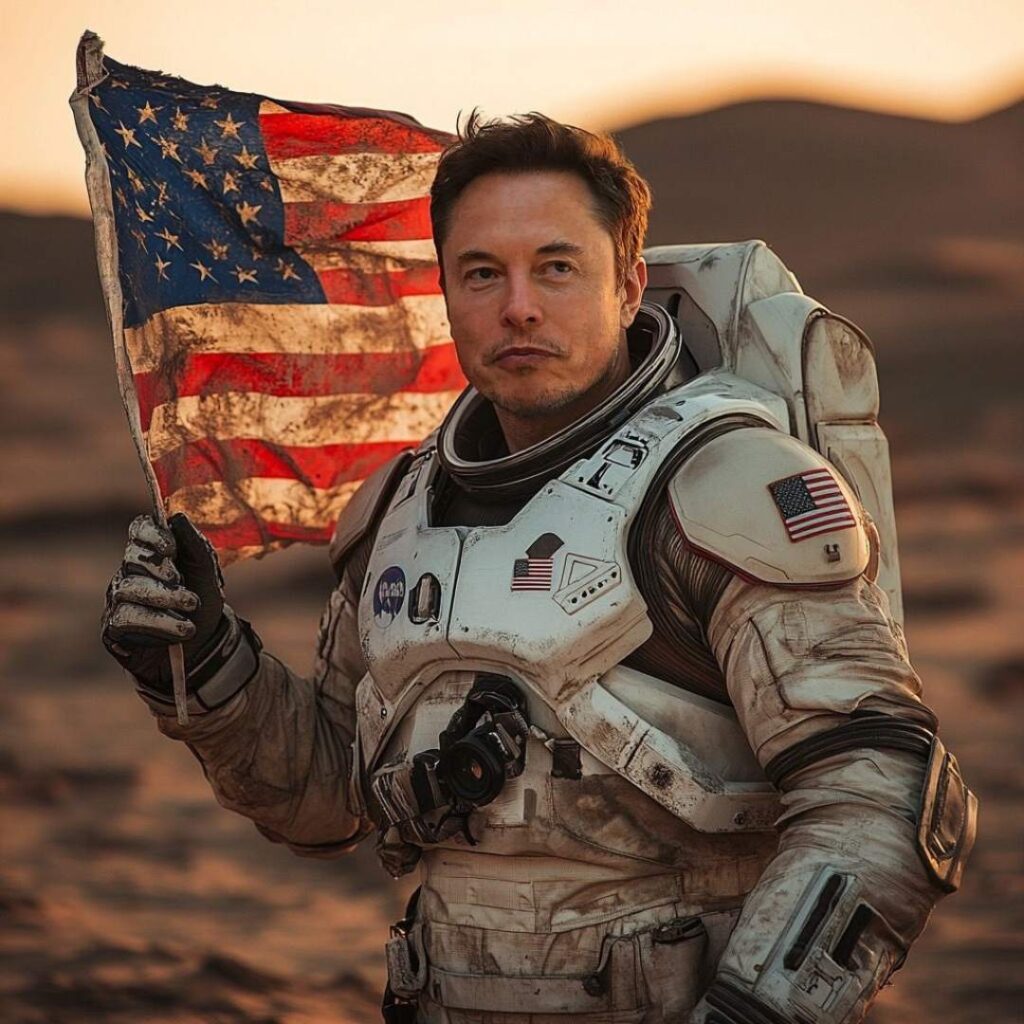Elon Musk, the mastermind behind SpaceX, has consistently made headlines not only for his ambitious projects but also for his sometimes controversial persona. Now he says we will be on the Mars in 2 years
To some, Musk’s grandiose ideas and unfiltered statements make him appear more like a fictional antagonist than a real-world entrepreneur. But beneath his bold public image lies a sharp engineer and visionary responsible for groundbreaking advancements in aerospace and electric vehicles. His ventures like Tesla and SpaceX have led a technological revolution, while others, such as Neuralink, still hold the potential to reshape their respective fields.
Moving to Mars
One of Musk’s most recent plans is to launch five unmanned spacecraft to Mars, seizing the opportunity presented by the 2025 launch window. For that vision to become reality, SpaceX has been focusing on perfecting the technology needed for the Super Heavy booster, the rocket’s reusable lower stage, to land back near the launch tower. We launch in 2025, and reach there in 2026.

Achieving this launch cadence may not be possible just yet, as the Super Heavy booster is still in testing. However, within two years, such a pace seems within reach. SpaceX currently has two launch towers at its Boca Chica, Texas facility, with a third standing ready at Cape Canaveral’s Kennedy Space Center. When fully operational, these towers could potentially allow SpaceX to launch multiple Super Heavy boosters within a very short timeframe.
For deep space missions, Musk envisions a network of tanker spacecraft that can refuel the main vessel in orbit, using methane and oxygen. Each Mars mission will need anywhere from six to twelve refueling flights to carry enough fuel to break free of Earth’s orbit and continue to Mars. The process is critical, as each tanker will have to quickly dock and refuel to minimize fuel loss from evaporation.
What is needed to reach there?
To sustain this launch rate, Boca Chica and Kennedy Space Center would need significantly more fuel storage capacity. A proposed solution includes expanding the fuel facilities to allow more frequent refueling, possibly through a coastal jetty and pipeline to bring in methane in large quantities by sea.
The refueling spacecraft themselves would likely be reusable, outfitted with heat shields to survive re-entry. Equipped with fewer engines, these tankers represent a smaller investment, and if the need arises, Musk could choose to discard them after delivery. This practice isn’t new to SpaceX, as seen during a recent mission where three rocket bodies were allowed to burn up to maximize fuel usage.
For Musk and SpaceX, the primary goal remains the colonization of Mars, but the near-term focus will likely be on refining in-space refueling techniques. This critical step will also support NASA’s lunar landings under the Artemis program. While Mars may be Musk’s ultimate destination, the Moon is the more immediate target for this revolutionary refueling technology.




